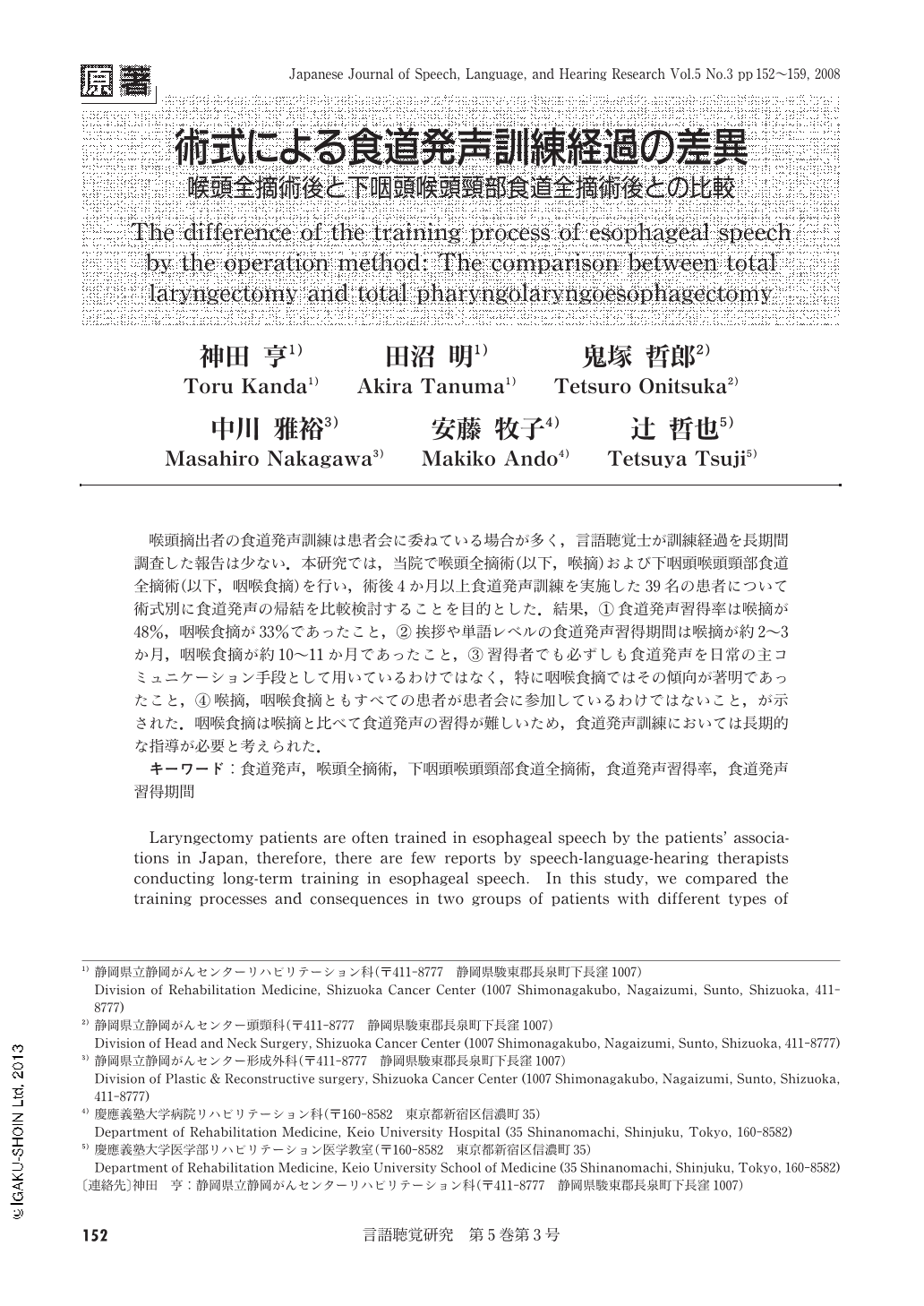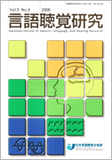Japanese
English
- 有料閲覧
- Abstract 文献概要
- 1ページ目 Look Inside
- 参考文献 Reference
- サイト内被引用 Cited by
喉頭摘出者の食道発声訓練は患者会に委ねている場合が多く,言語聴覚士が訓練経過を長期間調査した報告は少ない.本研究では,当院で喉頭全摘術(以下,喉摘)および下咽頭喉頭頸部食道全摘術(以下,咽喉食摘)を行い,術後4か月以上食道発声訓練を実施した39名の患者について術式別に食道発声の帰結を比較検討することを目的とした.結果,①食道発声習得率は喉摘が48%,咽喉食摘が33%であったこと,②挨拶や単語レベルの食道発声習得期間は喉摘が約2~3か月,咽喉食摘が約10~11か月であったこと,③習得者でも必ずしも食道発声を日常の主コミュニケーション手段として用いているわけではなく,特に咽喉食摘ではその傾向が著明であったこと,④喉摘,咽喉食摘ともすべての患者が患者会に参加しているわけではないこと,が示された.咽喉食摘は喉摘と比べて食道発声の習得が難しいため,食道発声訓練においては長期的な指導が必要と考えられた.
Laryngectomy patients are often trained in esophageal speech by the patients' associations in Japan, therefore, there are few reports by speech-language-hearing therapists conducting long-term training in esophageal speech. In this study, we compared the training processes and consequences in two groups of patients with different types of operative method.
Thirty-nine patients who had undergone surgery at Shizuoka Cancer Center were analyzed who had undergone either a total laryngectomy (TL) or a total pharyngolaryngoesophagectomy (TPLE) and received training in esophageal speech for more than four months. The results were as follows:①The acquisition rate of esophageal speech was 48% and 33% after TL and TPLE, respectively. ②Greetings and word level esophageal speech utterances were acquired within 2-3 months after TL and 10-11 months after TPLE. ③Those who acquired esophageal speech did not necessarily use it as the primary means of daily communication. This tendency was particularly true of TPLE patients. ④Regardless of the operative methods, not all patients were participating in the patients' association.
In conclusion, acquiring esophageal speech is more difficult for TPLE patients than for TL patients. Therefore, we suggest that post TPLE esophageal speech training should be continued for a sufficiently extended period of time.

Copyright © 2008, Japanese Association of Speech-Language-Hearing Therapists. All rights reserved.


